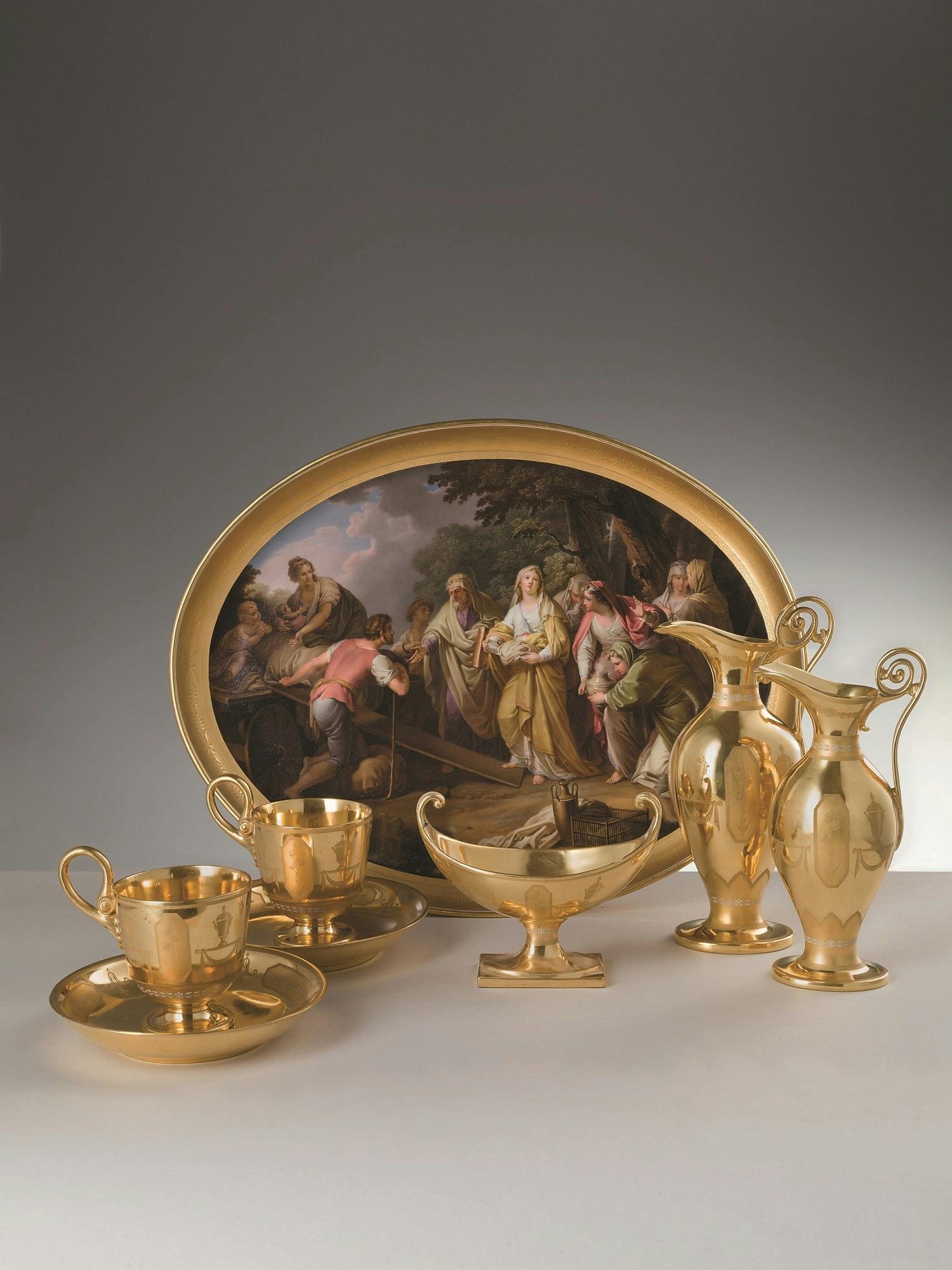Têtê-à- têtê breakfast service
Leopold Lieb and Imperial Porcelain Manufactory, Vienna
Leopold Lieb (signature)
Under the tray: “La Fuite des Vestales. / D’après l’original de N.le Chevalier / Jean Bapt:de Lampi; Professeur / de l’Accademie; peint par Leopold Lieb”; “810” numeral stamp of the year 1810 stamped; “P” letter corresponding to the modeller Georg Ebert stamped
Under the cup: “811” numeral stamp of the year 1811 stamped
Under the saucer: “46” number of the modeller Georg Ebert stamped
The decoration of this breakfast service for two people best expresses the Court’s opulence thanks to the surface of the utensils entirely covered with gold backgrounds, decorated with antique-style motifs etched on the surface itself, with a tone-on-tone visual effect. The cups with a raised foot, the amphora-shaped coffee pot and milk jug, as well as the sugar bowl, inspired by the incense-holder, evoke the interest in classicist taste present in Vienna at the beginning of the 19th century, which can also be seen in silverware.
Undoubtedly, the tray constitutes the main element of the ensemble and its colour almost contrasts with the profusion of gold in the service. The scene depicted was executed using the complex technique of miniature on porcelain, introduced by the Sèvres Manufactory in the early 19th century. It consists of faithfully reproducing a painting from life in small size, a genre particularly appreciated by Grand Tour travellers, as it proposed the transposition, usually on porcelain plates, of canvases by the great masters of the 16th and 17th centuries. A caption was provided on the back of the decoration indicating the name of the executor, the author and the title of the derivation, as well as the location, if any. In our case, it reveals that the tray was decorated by Leopold Lieb, who reproduced the canvas executed by Giovan Battista Lampi, who, moreover, was his professor at the Academy of Arts in Vienna. The subject depicted is La Fuite des Vestales (The flight of the Vestal Virgins from Rome), which can be traced back to the Sack of Rome in 390 BC as narrated by Titus Livius in the History of Rome. Finished in 1808 and exhibited in 1813 in an exhibition held at the Academy, the painting can therefore be considered a well-known work at the time.
It is not known whether the déjeuner was a gift from the Imperial Manufactory to the Grand Duke Ferdinand III Habsburg-Lorraine, or whether it was commissioned by him during his exile in Vienna during the Napoleonic era and then taken by him to the Palace of the Pitti Palace when he returned there in 1814.
